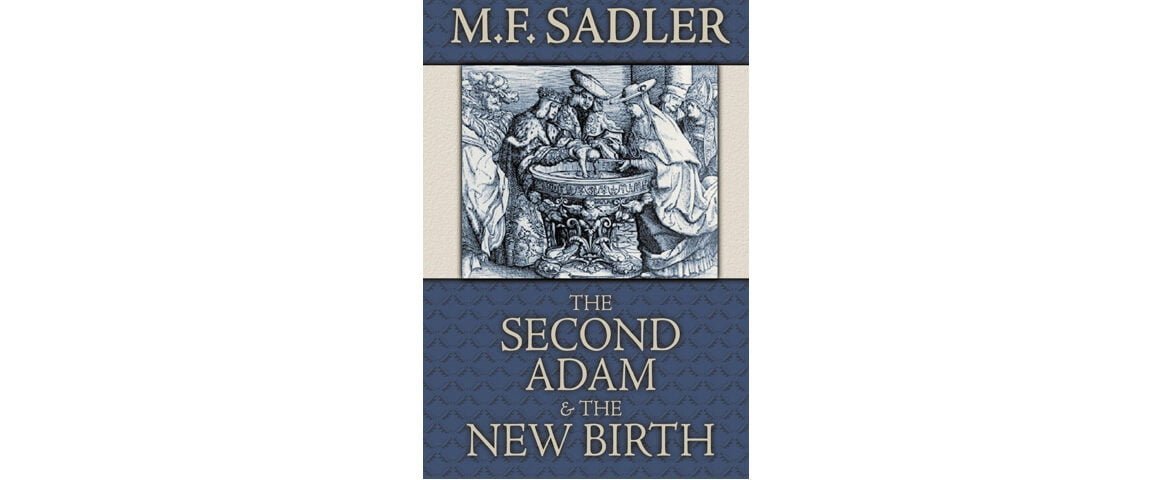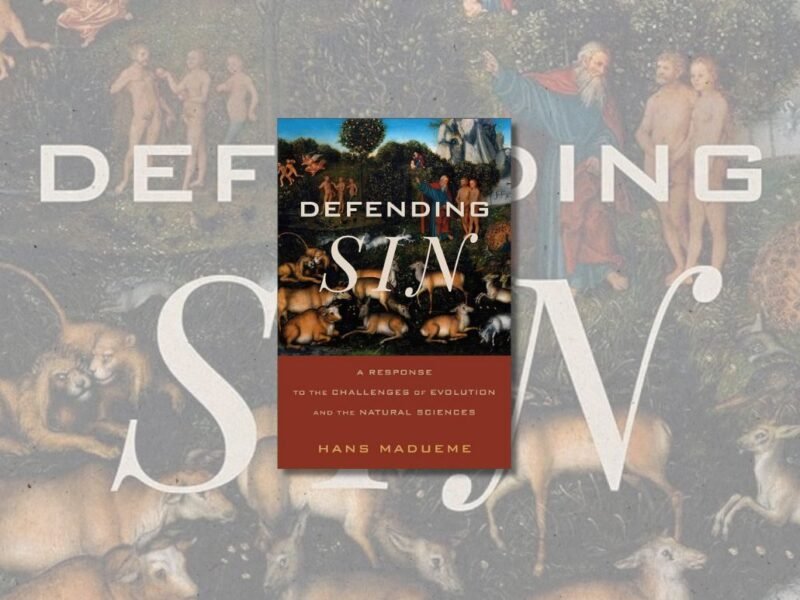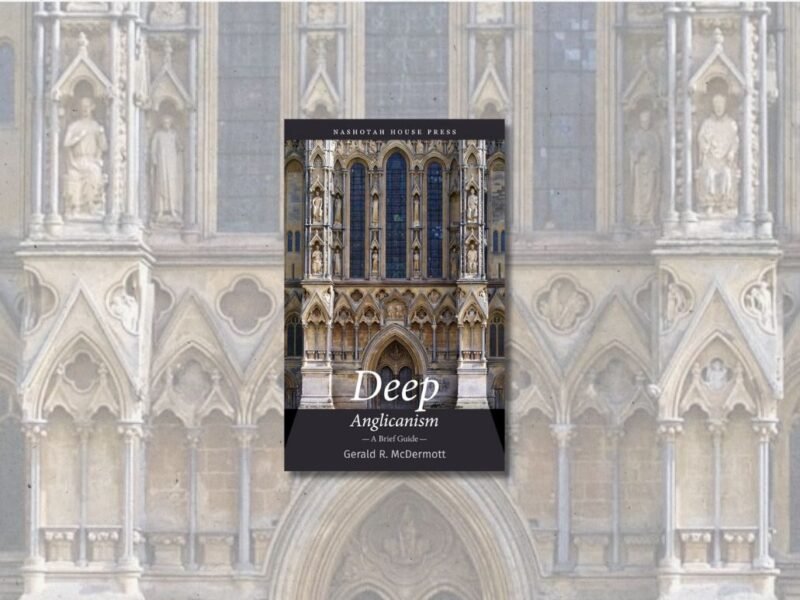The Second Adam and the New Birth. By M. F. Sadler. Monroe, LA: Athanasius Press, 2004. 288 pp. $21.95 (paper).
Some years ago when a friend and I were both becoming interested in Anglicanism, I accompanied this friend on a visit with his Baptist family. My friend’s mother heard that I, like her son, was considering Anglicanism, which led her to ask me if I believed in baptismal regeneration. At the time I thought “baptismal regeneration” meant that those who are baptized will automatically go to heaven, so I said no. “Good!” she responded, clearly glad to hear my answer.
I suspect that Christians today often oppose baptismal regeneration because, like me in this anecdote, they simply don’t know what it means, nor do they have a solid grasp of related terms such as “conversion” and “regeneration.” They tend to believe baptismal regeneration is a “Catholic” (i.e., Roman) doctrine, and that an inward change alone is what saves us. For those seeking a response to such popular misconceptions, M. F. Sadler’s The Second Adam and the New Birth is a tremendous resource. Originally published in 1857, it was reprinted in 2004 by Athanasius Press and is still readily available today.
“Baptismal regeneration,” in the words of Sadler, primarily denotes the fact that Christians “are assumed to have been brought into a state of grace at the time when they received Baptism” (215), meaning they are “all partakers of the Holy Spirit, and baptized by Him into Christ’s body” (67, italics original), and so on. In defending this understanding of baptism Sadler is attentive to church tradition, extensively quoting Augustine, Anselm, Aquinas, Luther, Calvin, and Cranmer, among others. That said, most of the work is devoted to the biblical witness concerning baptism. Indeed, Sadler introduces the book as “a handbook of Scripture reference on the subject of Baptismal Doctrine” (xi). This Scriptural focus is especially a boon for those looking to engage with opponents of baptismal regeneration, who are more likely to discount tradition in favor of biblicism.
The bulk of Sadler’s overview of Scripture is devoted to the New Testament, in which he endeavors to show that baptismal regeneration is assumed with regard to “all the Christians of the Apostolic Churches” (215). This assumption is evidenced by Paul’s repeated declarations that they are all, for example, “washed,” “sanctified,” and “justified in the name of the Lord Jesus and by the Spirit of our God” (1 Cor. 6:11). Hence, when confronting the people with their sins, Paul does not call them to be regenerated or “born again,” as though they had never truly been Christian (70‒71). Rather, he reminds them that they are already regenerate in their baptism, that in sinning they sin against Christ, whose body they are (67), and if they persist in sinning they bring greater condemnation to themselves (71). In this way the New Testament mirrors the Old Testament, which “ever addresses the whole circumcised nation as in real covenant relationship with God” (55, italics original). Thus the sins of the Israelites, too, are all the more grievous precisely because they are presumed to already be in a covenantal state of grace.
As Sadler makes clear in drawing attention to Paul’s frequent calls to repentance, the doctrine of baptismal regeneration should not be understood to suggest that a person’s inward state, or “heart condition,” can safely be overlooked. In fact, when we hear it said that baptized, nominal Christians need to be inwardly converted, this language of “conversion” is actually “synonymous with true repentance and a change of heart,” although “repentance” is the “more Scriptural term” (171n1). However, to say that a nominal Christian needs to be “born again” is imprecise and inappropriate: “Never, in any single instance [in the New Testament], is any baptized Christian called upon to become regenerate [i.e., born again]” (116).
Sadler also addresses the charge that baptismal regeneration contradicts the doctrines of election and justification by faith. Regarding election, the objection typically goes that many people who are baptized ultimately die apart from Christ. But, it is asked, how can this be if baptism is correlated with regeneration and, by extension, election? Although Sadler resolves not to enter into overly technical questions on the nature of election, he pointedly observes that in the very Epistle to the Romans where the doctrine of election is so clearly expounded, Paul also counsels the baptized to “continue in His goodness; otherwise thou also shalt be cut off” (Rom. 11:22, italics Sadler’s). In this passage—as well as a great many others, catalogued by Sadler for the reader’s convenience—the clear implication is that it is possible to fall away from saving grace. Therefore, baptismal regeneration only contradicts the Calvinistic doctrine of election, with its affirmation of perseverance of the saints, not election per se.[1]
Regarding the notion that baptismal regeneration is at odds with justification by faith, the supposed problem here is that attributing salvific power to the sacrament of baptism detracts from the primacy of faith in our salvation. As Sadler notes, however, Paul, Luther, Calvin, and Cranmer all maintained these two doctrines simultaneously. For to what do we look in faith, if not to Christ and the work he has accomplished in and for us, the remission of our sins, which is applied to us in baptism?
The above discussion represents only part of Sadler’s treatment of baptismal regeneration, but I believe it suffices to convey the book’s value. In short, if you’re looking for a presentation of baptismal regeneration that is both Scriptural and catholic, The Second Adam and the New Birth is the place to start. As Sadler remarks, “The sacramental vein of doctrine pervading…all Scripture, has been in this last age of the Church completely ignored” (161). This book does a great deal to redress such ignorance with respect to baptism.
Notes:
- For more on ecclesiastical election, which Sadler appears to affirm—this being the doctrine that God unconditionally elects people to baptism and membership in Christ’s Church, from which privileges the elect can still turn away and ultimately fall—see Bishop Edward Harold Browne’s treatment of Article XVII, https://northamanglican.com/exposition-of-the-thirty-nine-articles-article-xvii-part-1/. ↑







'Book Review: “The Second Adam and the New Birth”' has no comments
Be the first to comment this post!